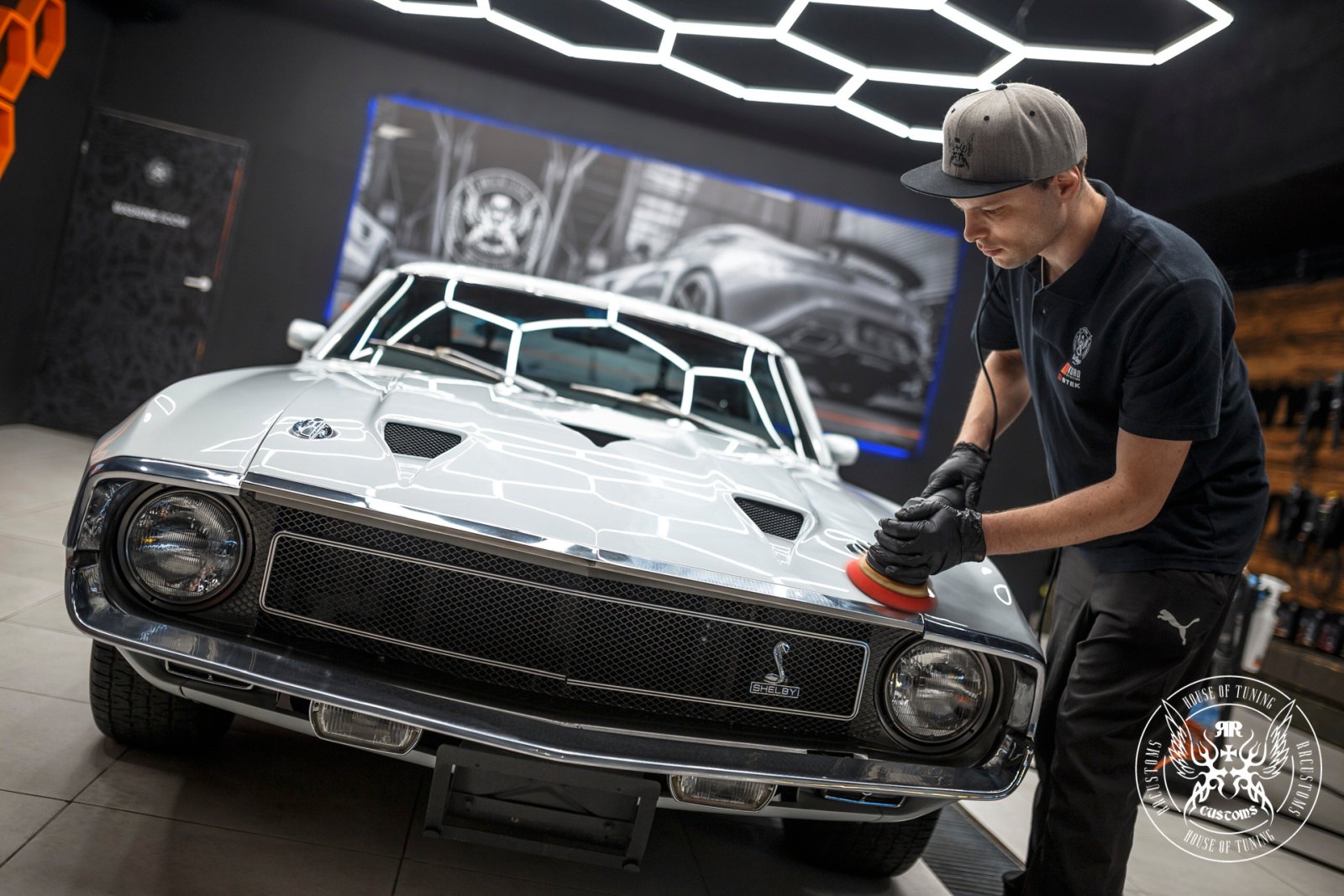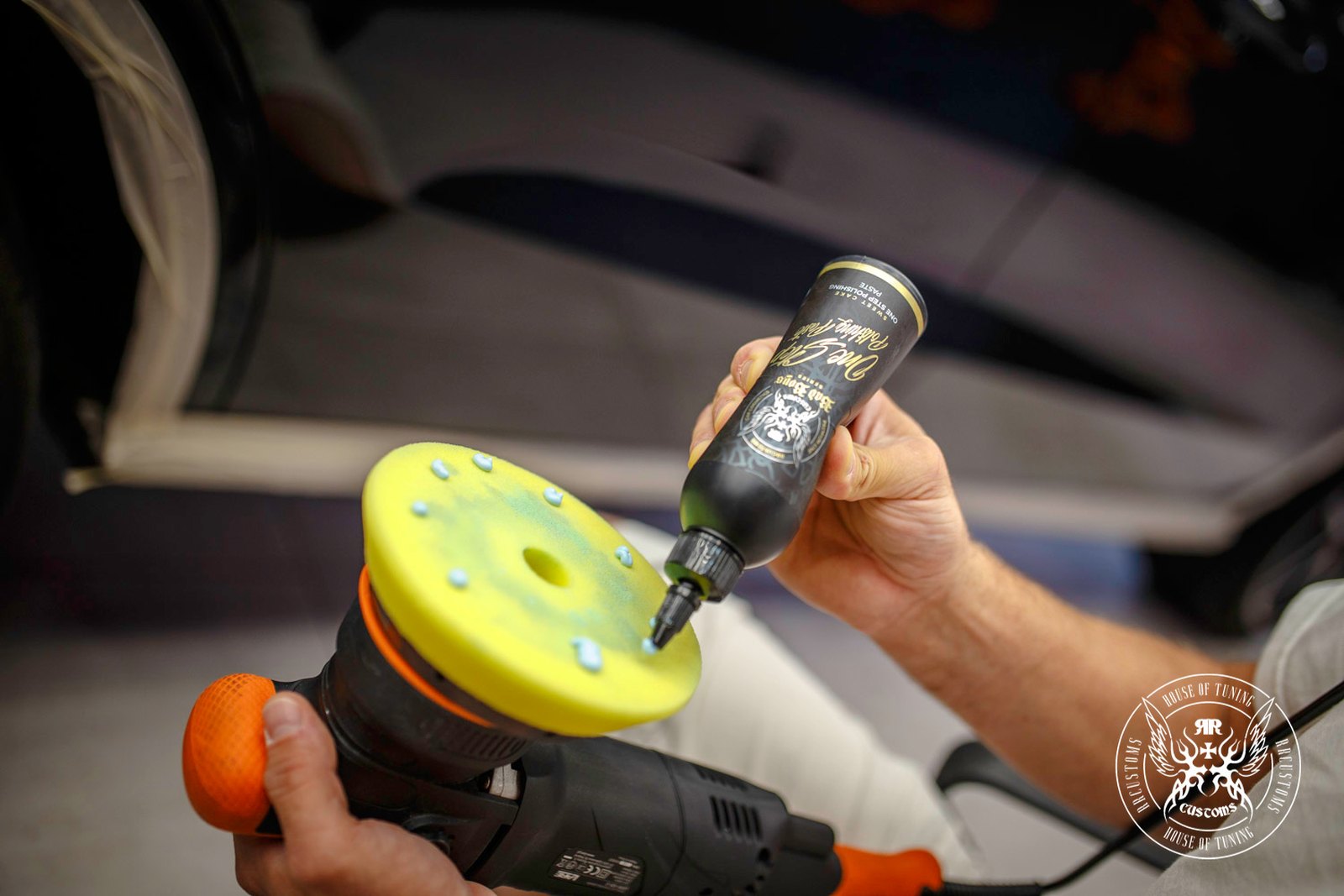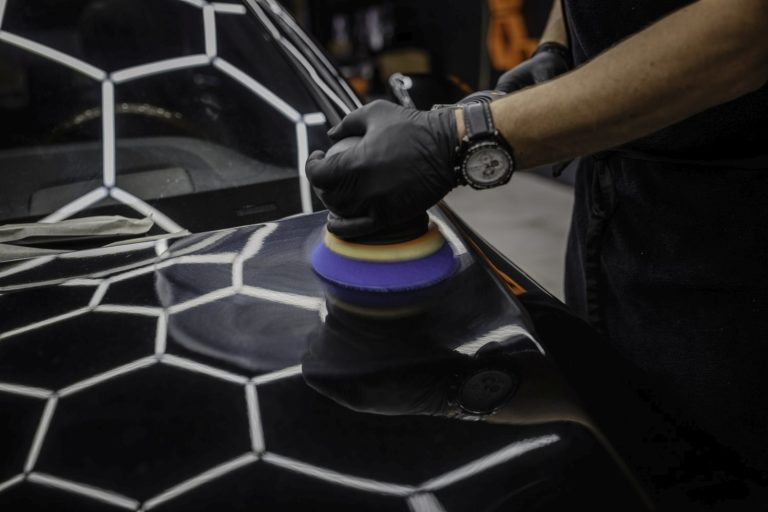In today’s world, a well maintained car stands as a testament to its owner’s dedication. The cherry on top of this dedication is the paintwork. However, with time, this once vibrant and glossy surface can become tired of life and succumb to scratches, swirl marks, oxidation, and other imperfections. This article unveils the secrets of paint correction, an integral part of auto detailing that brings back the radiant shine of your car’s paint.

Table of Contents
- What is Paint Correction?
- Paint Correction Step by Step
- One-Stage Paint Correction: The Perfect Choice
- Car Paint Polishing
- Polishing Process Step by Step from Start to Finish
- Paint Renovation: Breathing New Life into Your Car’s Paintwork
- Waxing: Traditional Paint Protection
- Ceramic Coatings: Modern Paint Protection
- Car Paint Protection: Shielding the Beauty
- Summary

1. What is Paint Correction?
Why is paint correction important?
Paint correction, an auto detailing service, is the art of using specific polishing techniques to erase minor damage and defects from a car’s paint surface. By removing scratches, swirls, etches, and other imperfections, not only does the vehicle’s resale value increase, but its paint also regains the luster and depth it once had.
Types of Paint Correction
Depending on the depth of the imperfections and the desired finish, paint correction can range from a simple one-stage process to a more comprehensive multi-stage approach. While a one-stage paint correction using a machine polisher may suffice for lighter surface abrasions, deeper scratches may necessitate multi-stage processes involving various polishing compounds and techniques.
2. Paint Correction Step by Step
Preparation
Proper car preparation is vital. Begin with a thorough car wash to rid the surface of dirt and contaminants. Following this, a detailed inspection of the paint condition will highlight areas that require attention, using lamps to spot even defects not visible to the naked eye.
Tools and Materials
For optimal paint correction results, essential tools include a machine polisher (dual-action being a popular choice), an assortment of polishing pads, and suitable polishing compounds. Quality microfiber cloths and towels are also needed for residue removal.
3. One-Stage Paint Correction: The Perfect Choice
Process
A one-stage paint correction employs a single polishing compound and pad to minimize surface imperfections. This efficient method can significantly enhance the vehicle’s paint. Ensure you’re well-versed with the polishing techniques to avoid further paint damage.
Benefits
A one-stage paint correction, often included in a detailing package, stands out due to its time efficiency and effectiveness in eradicating minor defects. This process restores the paint’s shine and depth, reviving the vehicle’s appearance.
4. Car Paint Polishing
Polishing Techniques
Polishing is a cornerstone of the paint correction process, it employs techniques like:
- Manual Polishing: Ideal for small areas but labor-intensive.
- Machine Polishing: Offers even and effective results.
5. Polishing Process Step by Step from Start to Finish

- Choice of Polishing Paste
Let’s start with the selection of the right polishing compound. There are several types of polishing compounds that differ in granularity – from more abrasive to the finer ones. Here are the three main types:- Cutting Paste (Cutting): This is the most abrasive compound used for removing deeper scratches, dullness, and other deep paint damages.
- Polishing Paste (Polish): This is a medium-abrasive compound, perfect for removing minor scratches and restoring shine to the paint.
- Finishing Paste (Finish): This is the least abrasive compound, used to add depth to the color and a perfect finish to the surface.
- Choice of Polishing Pad
- Cutting Pad: This is an open-structured pad that works best with abrasive compounds, removing deep scratches and damages.
- Polishing Pad: This pad is of medium hardness, which is best for use with polishing compounds, helping to remove minor scratches and restore shine.
- Finishing Pad: This is the softest type of pad that works excellently with finishing compounds, adding depth of color and a superb finish to the paint.
- Polishing Process
- Applying Paste to the Pad: Apply the chosen paste to the appropriate pad. Use the right amount of compound on the pad, typically the size of a coin.
- Starting the Polishing: Place the pad on the paint surface and start polishing at low speeds to evenly distribute the compound over the work area.
- Polishing Technique: Polish the surface with cross motions, working on small areas at a time. Gradually increase the speed of the polisher, maintaining even pressure.
- Progress Check: After finishing one area, check your work. If you notice that all scratches and defects have been removed, move on to the next area.
- Cleaning the Pad: Regularly clean the pad during work to avoid excessive accumulation of residues and dirt, which can lead to additional scratches.
- Finishing: After completing the entire process, apply a finishing compound and finishing pad to add shine and depth to the paint color.
6. Paint Renovation: Breathing New Life into Your Car’s Paintwork
What is paint renovation?
Paint renovation is an essential detailing service designed to regenerate the paint surface, aiming at revitalizing and restoring the paint’s gloss to car paint that has suffered over time. It’s more than just a car wash; it’s a rebirth for your vehicle’s aesthetics.
How to perform a paint renovation?
Reviving your car’s paint goes beyond mere touch-up paint applications. The renovation includes processes like deep cleaning, machine polishing, and laying a new protective coating, like paint sealant or paint protection film. When thinking about a new paint job, consider a renovation first – it might just bring that new car shine back to your vehicle.
7. Waxing: Traditional Paint Protection
Why use wax to protect the paint?
In the realm of auto detailing, waxing stands as a time-honored method of paint protection. Wax seals the paint surface, shielding it from harmful contaminants, UV rays, and water spots, while also boosting its gloss.
How to properly wax the paint?
For a perfect waxing process:
- Ensure the paint surface is pristine and dry.
- Using a microfiber applicator, evenly apply the wax.
- Wait for it to dry (times can vary).
- Use a soft cloth to buff the surface, eliminating excess wax and revealing a radiant shine.
8. Ceramic Coatings: Modern Paint Protection
Ceramic coatings offer advanced protection. When applied, they form a tough, long-lasting shield against elements, ensuring the paint remains untouched. Moreover, they enhance the depth and shine of the car’s paint, amplifying its aesthetic appeal.
9. Car Paint Protection: Shielding the Beauty
After correction, it’s imperative to shield the paint using products like waxes, sealants, or advanced ceramic coatings to maintain the paint’s radiance and longevity.
10. Summary
Paint correction and detailing is an art and science combined. Remember to always:
- Analyze the paint’s condition.
- Choose suitable tools and products.
- Master polishing techniques.
- Protect the paint post-correction.
- Regularly maintain the paint.
